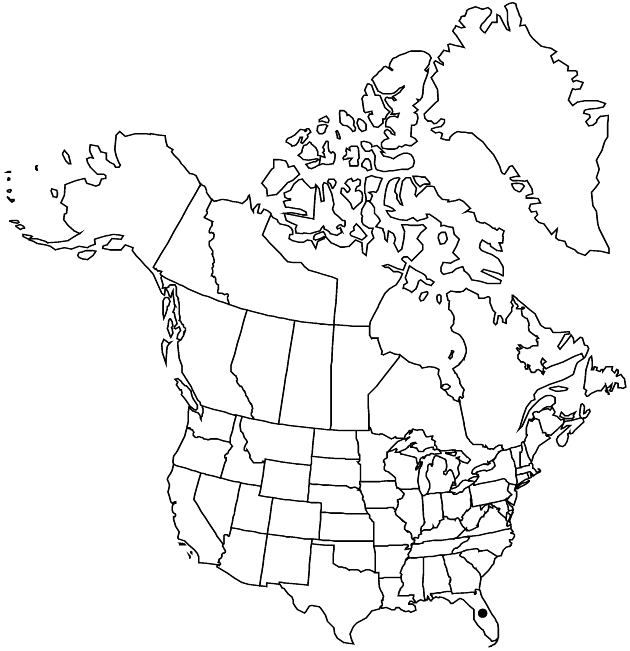Pluchea carolinensis
in R. Sweet, Hort Brit. ed. 3, 350. 1839.
Subshrubs, 100–400 cm; taprooted. Stems matted-villous with viscid, vitreous hairs, proximally glabrescent, not evidently glandular. Leaves petiolate (petioles 10–40 mm); blades (thickish, strongly bicolor) elliptic to oblong-obovate or ovate, 5–16 (–20) × 2–6 (–8) cm, margins entire or denticulate (teeth callous-tipped), abaxial faces moderately or sparsely matted-villous to crinkly-puberulent, adaxial (green) glabrate. Heads in dense, corymbiform arrays (held beyond the leaves, axes minutely bracteate, bracts abruptly differentiated from cauline leaves). Involucres broadly campanulate to cupulate, 4.5–6 × 5–10 mm. Phyllaries greenish to creamy or tan, sometimes slightly purple, glandular-tomentose. Corollas whitish to pink-lavender. Pappi tardily falling, bristles distinct. 2n = 20.
Phenology: Late Feb–Jun.
Habitat: Roadsides, borders of hammocks
Elevation: 0 m
Distribution

Introduced; Fla., Mexico, West Indies, Bermuda, Central America, South America, in Pacific Islands
Discussion
Pluchea carolinensis is naturalized in the Hawaiian Islands and other Pacific Islands.
The names Pluchea odorata of authors, not (Linnaeus) Cassini, and P. symphytifolia of authors, not Conyza symphytifolia Miller in the sense of W. T. Gillis (1977), have been used for plants here called Pluchea carolinensis. The taxon was long identified as P. odorata (R. K. Godfrey 1952) and was known as P. [Conyza] symphytifolia (Miller) Gillis for a while. Conyza symphytifolia Miller is a synonym of Neurolaena lobata (Linnaeus) Cassini (R. Khan and C. E. Jarvis 1989).
Selected References
None.